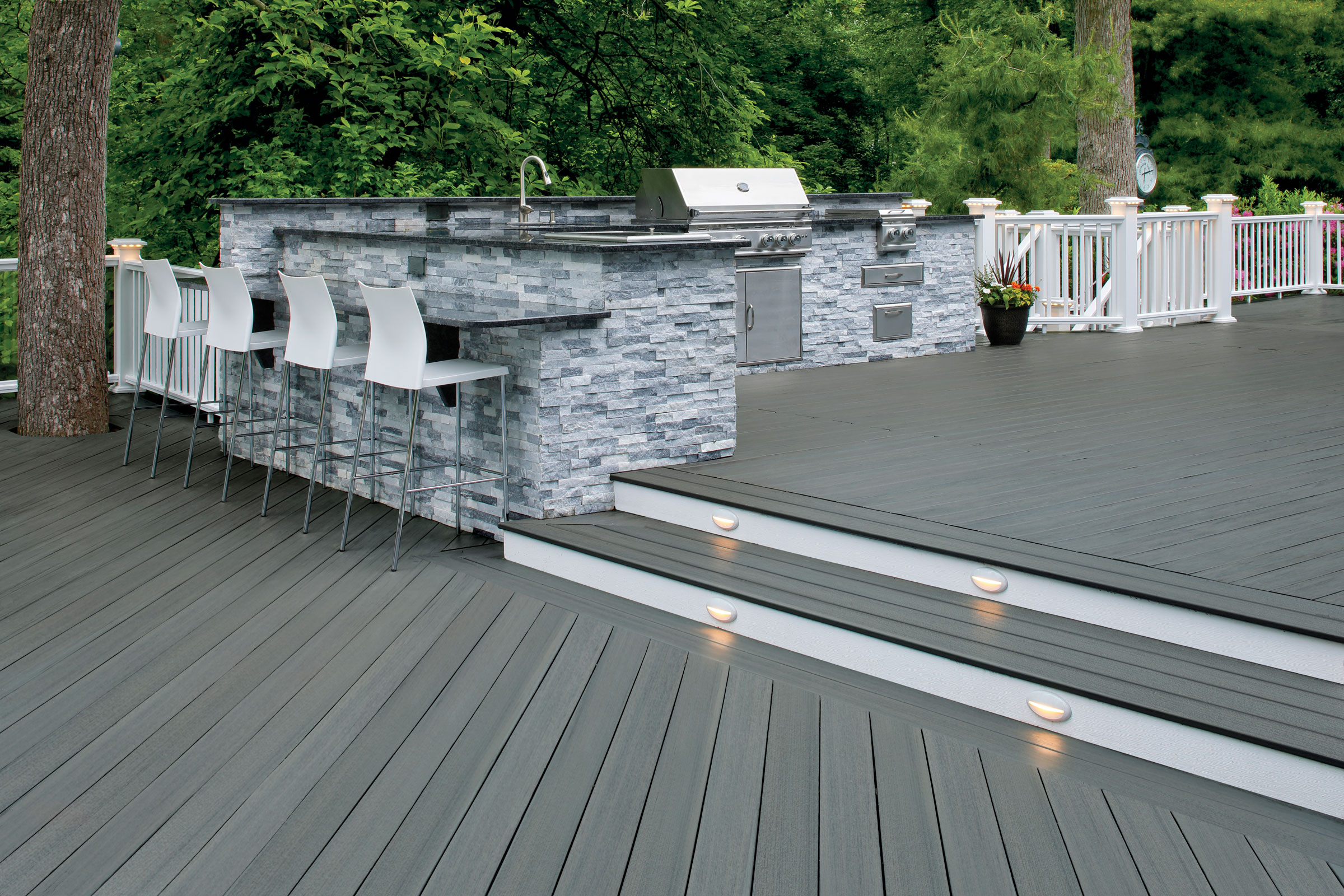Story at a glance:
- Experts across the industry share the pros and cons of using different types of decking materials.
- Wood makes up 8.3% of all landfill waste, and reclaimed wood can help avoid excess waste, according to the EPA.
- Fused bamboo combines wood’s aesthetic appeal with plastic composite’s durability to make a sturdy outdoor material.
Simple deck ideas can elevate all types of outdoor entertaining spaces, but the first step is to choose the sustainable building material that’s best for your project.
While materials like reclaimed wood and fused bamboo are primarily wood-based, composite decking and porcelain make use of alternative materials. Of course, there are pros and cons to all types of decking materials.
Explore which decking material may be most suitable for your next simple deck idea.
1. Reclaimed Wood
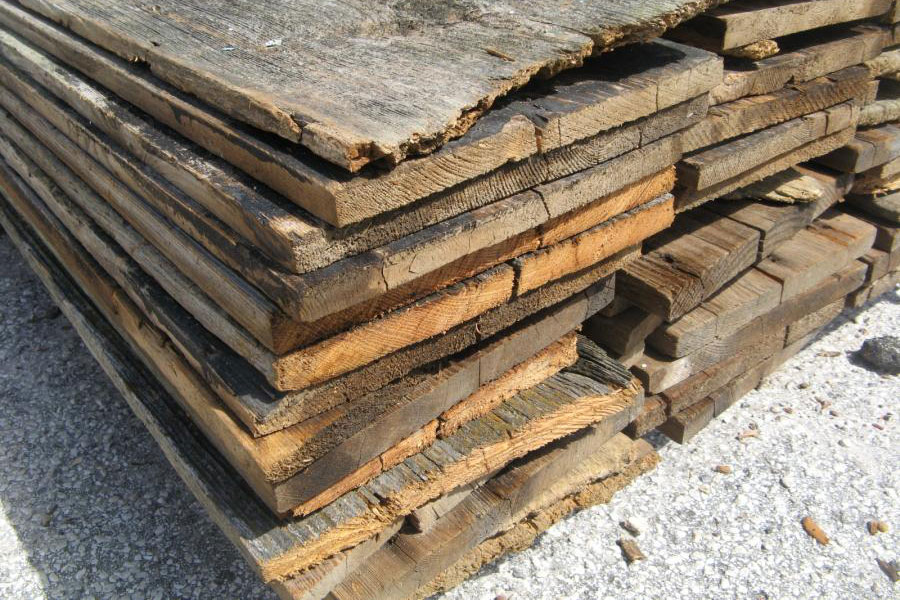
Raw and unfinished authentic reclaimed barn wood planks. Photo courtesy of Woodstock Architectural Products
Using reclaimed wood for decking can help make simple deck ideas even more sustainable. Plus, incorporating reclaimed wood avoids the use of dangerous equipment needed to cut new lumber.
According to the EPA, wood makes up 8.3% of all landfill waste, so recycling wood helps avoid excess waste.
But before you select your reclaimed wood as a decking material, consider whether it’s unfinished, because unfinished wood can come with risks, said Kevin Fults in a previous article for gb&d. Fults has over 30 years of experience in the wood industry.
Fults said unfinished planks must be metal-free (de-nailed), bug-free, and quality-controlled to remove any warping, splitting, or decomposing boards. Finishing the planks helps the wood be more equipped to handle changing environments, and adaptability is crucial for a green design.
According to the American Forest Foundation, compared to its construction material counterparts, wood emits up to 29% fewer greenhouse gases and releases up to 20% fewer pollutants into the air.
2. Fused Bamboo
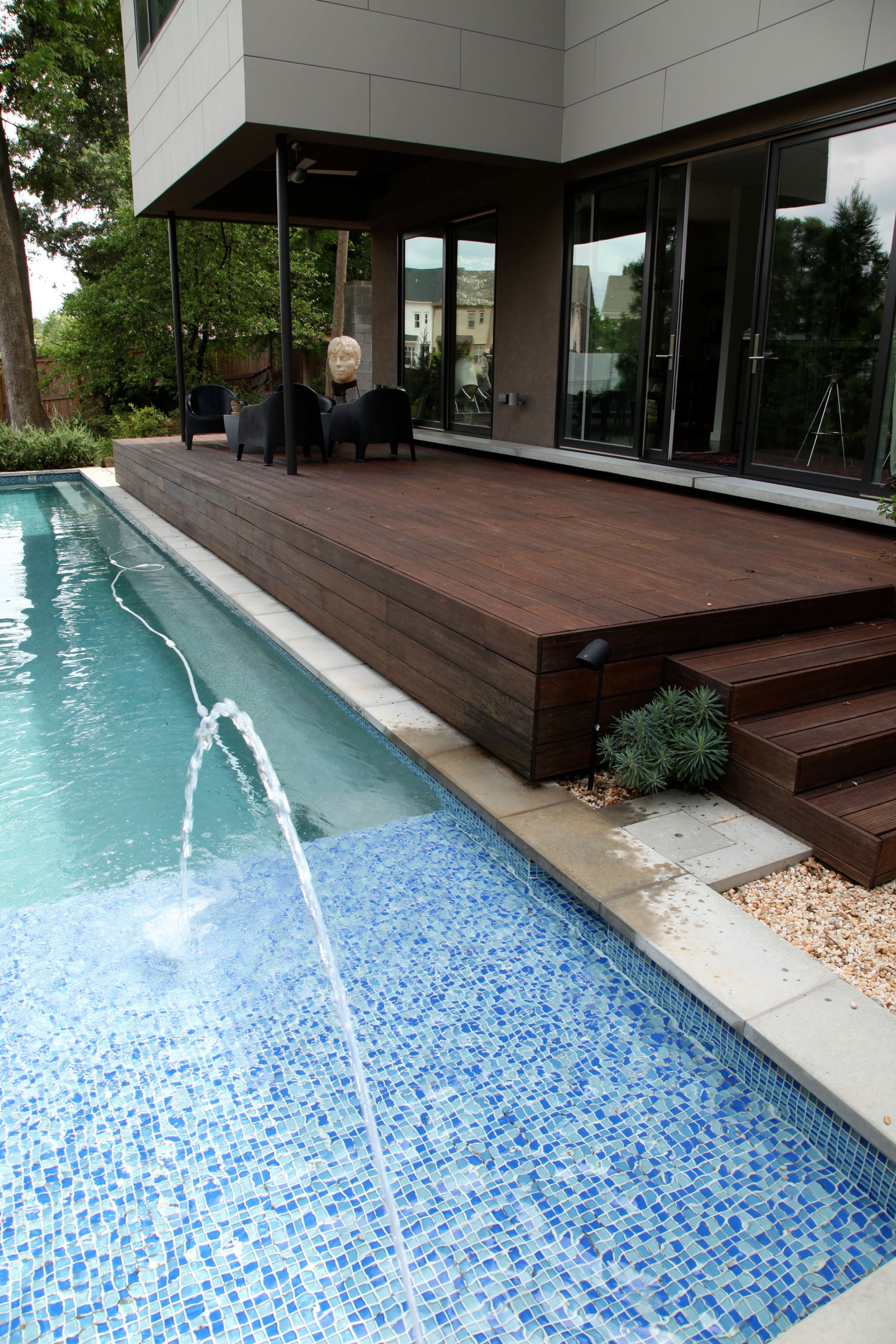
Similar to plastic composite, fused bamboo decking is low maintenance, durable, and non-rotting in nature. Photo courtesy of dasso USA
dasso USA develops innovative bamboo products, including bamboo flooring and decking. In 2006 the dasso Group introduced dassoXTR—an extremely durable bamboo product designed specifically for outdoor applications.
dassoXTR’s bamboo decking is made of fused bamboo—which requires bamboo to be harvested at peak growth, shredded into strands, and then extracted of nutrients. Those bamboo strands—no longer containing nutrients—are then recombined (fused) into a dense, durable panel.
Fused bamboo combines wood’s aesthetic appeal with plastic composite’s durability to make for a sturdy outdoor material, Bamboo Ambassador Avery Chua previously wrote for gb&d. Chua is a forester and wood technologist with more than 25 years of experience in the bamboo and adhesives and coating industry.
Chua says dassoXTR bamboo decking has the look and feel of natural wood minus the downsides—a short life span, fungus growth, and being prone to insect and termite attack, rotting, and instability. Similar to plastic composite, it is low maintenance, durable, and non-rotting in nature, he said.
3. Composite Decking
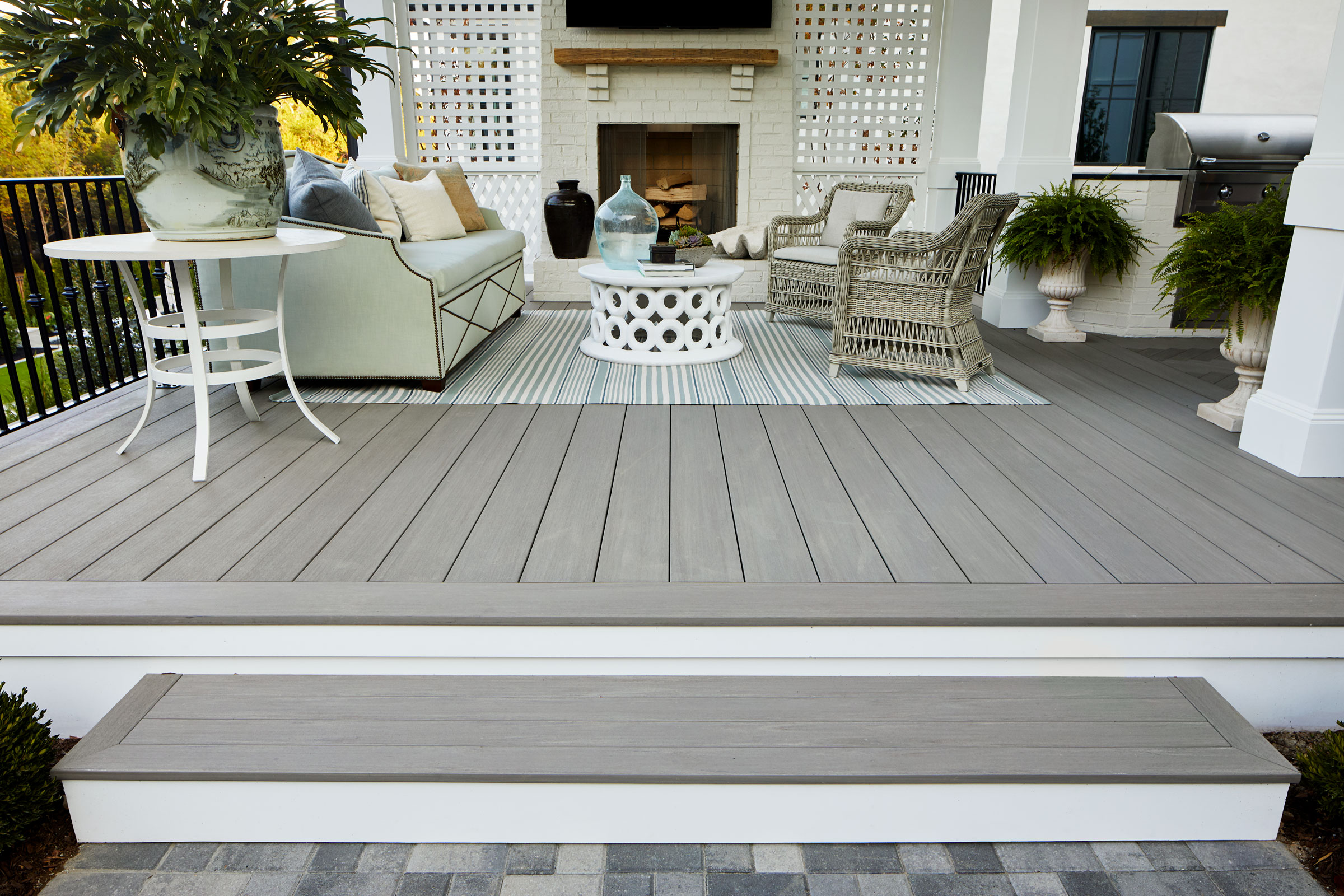
With very little maintenance, a high-quality capped-composite or polymer deck can last up to 50 years. Photo courtesy of The AZEK Company
Durability and relatively easy maintenance are two reasons designers may want to choose composite decking in place of traditional materials like wood.
Composite decking includes the main two types of synthetic decking materials of today—capped wood-plastic and capped-polymer decking.
Capped wood-plastic combines wood fiber (sawdust or wood flour) and plastic resins under heat and pressure to form the core of the deck board. On the other hand, capped-polymer decking uses a blend of resins and other performance additives without any organic materials in the core of the board. Both types of synthetic materials are encased in a hard, protective shell or “cap” that provides the design, color, or grain pattern.
With very little maintenance, a high-quality capped-composite or polymer deck will last up to 50 years, according to senior vice president of product management at The AZEK Company, Patrick Barnds. Meanwhile, a deck made of pine, cedar, or redwood has a life of about 15 years. Barnds previously told gb&d composite decks save an average of 1.2 trees per deck by recycling sawdust.
Although wood-plastic composites are generally less expensive, they are heavier, somewhat more difficult to work with, and can get hotter more easily, Barnds said.
4. Porcelain Pavers
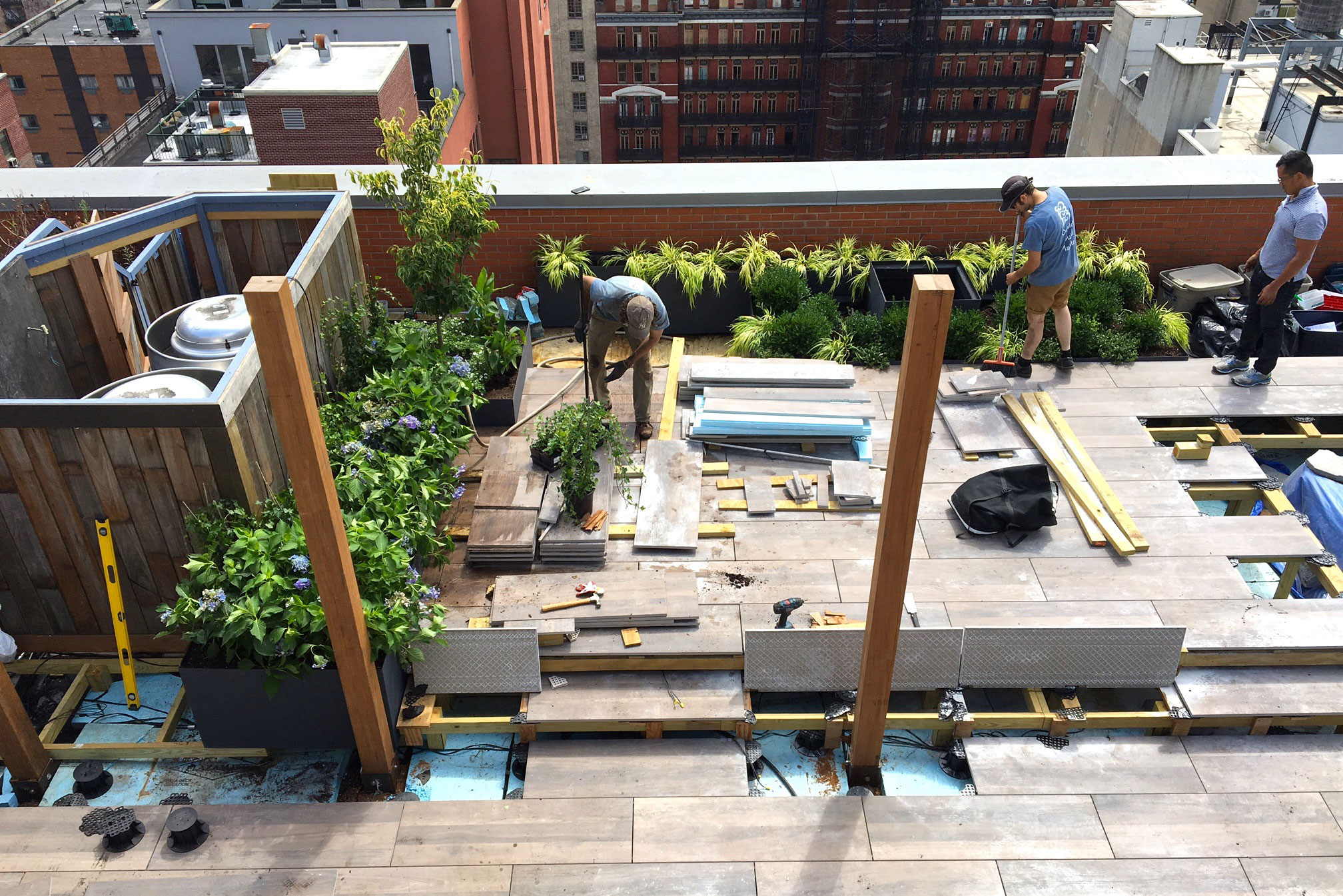
Archatrak’s porcelain planks are great for rooftop decks and green roofs. Photo courtesy of Archatrak
Every year new shapes and sizes of porcelain pavers are hitting the market, giving designers fresh materials for simple deck ideas.
Porcelain pavers can come in thicknesses from 3/4 inches to 2 inches, slabs as large as 96 inches by 48 inches, and planks as long as 94 inches.
Archatrak is a national supplier of porcelain pavers and wood deck tiles, among other outdoor amenities for commercial and residential applications. In 2021 the company released a new line of porcelain pavers that expands creative potential for decking.
Archatrak’s planks are great for rooftop decks and green roofs. “For a uniform, neutral tone that will complement any outdoor setting, I would suggest our monochrome line,” Malcolm Kay, CEO of Archatrak, said in a previous gb&d article.
Kay also said the company’s Wood Look pavers are popular for their resemblance to natural wood. “The reproduction of the color, features, and characteristics of natural wood are so realistic, it’s hard to believe they aren’t natural wood,” Kay said.

